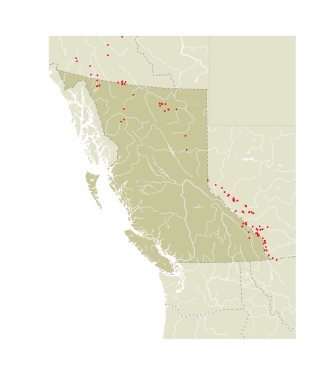The name Euchloe was written as Euchloë until the taxonomic code eliminated the use of diacritical marks. The name is apparently composed of the Greek eu (good) and khloë (light green colour of spring vegetation), referring to the green marbling on the ventral hindwings (Emmet 1991). The common name refers to the green marbling on the ventral hindwings.
The three species of marbles in BC are all small white butterflies with black markings on the upperside of the wings and a pattern of greenish marbling on the ventral hindwings. Marbles are generally found east of the Coast Range in BC. The most recent review of the genus Euchloe was by Opler (1967b, 1967c, 1967d, 1967e, 1970, 1971, 1975).
Eggs are greenish or cream white when laid, and then soon turn bright orange. Eggs are columnar, with the micropylar area broadly rounded. There are 15-20 prominent vertical ridges, connected by less prominent horizontal ridges. Larvae are green with longitudinal stripes, becoming purplish when prepupal. Pupae are variable shades of brown; they are long and slender, and the head end tapers to a narrow tip. A girdle holds the pupa head up and tightly against a stem.
Marbles lay eggs and feed on the leaves, stems, or flowerheads of Brassicaceae, especially Arabis, that are bolting into flower. Preferred plants grow in full sunlight and are more than 12 cm in height with an erect configuration. Young larvae feed on leaves or within flower buds or inflorescences of flower buds. Older larvae feed externally on seed pods (Opler 1975). Marbles hibernate as pupae, and all have only a single spring brood.
|
|
